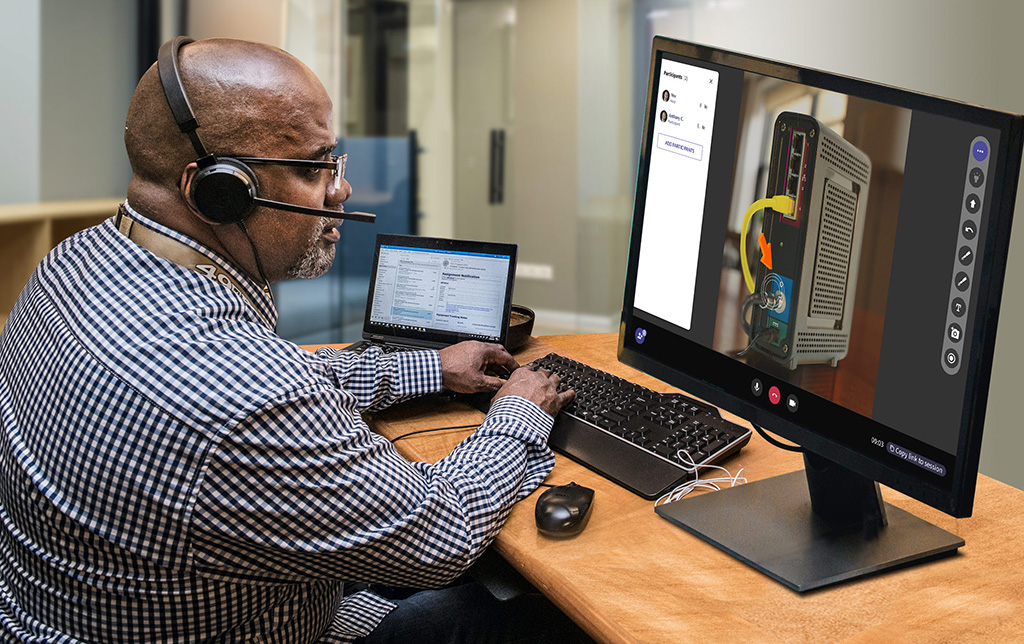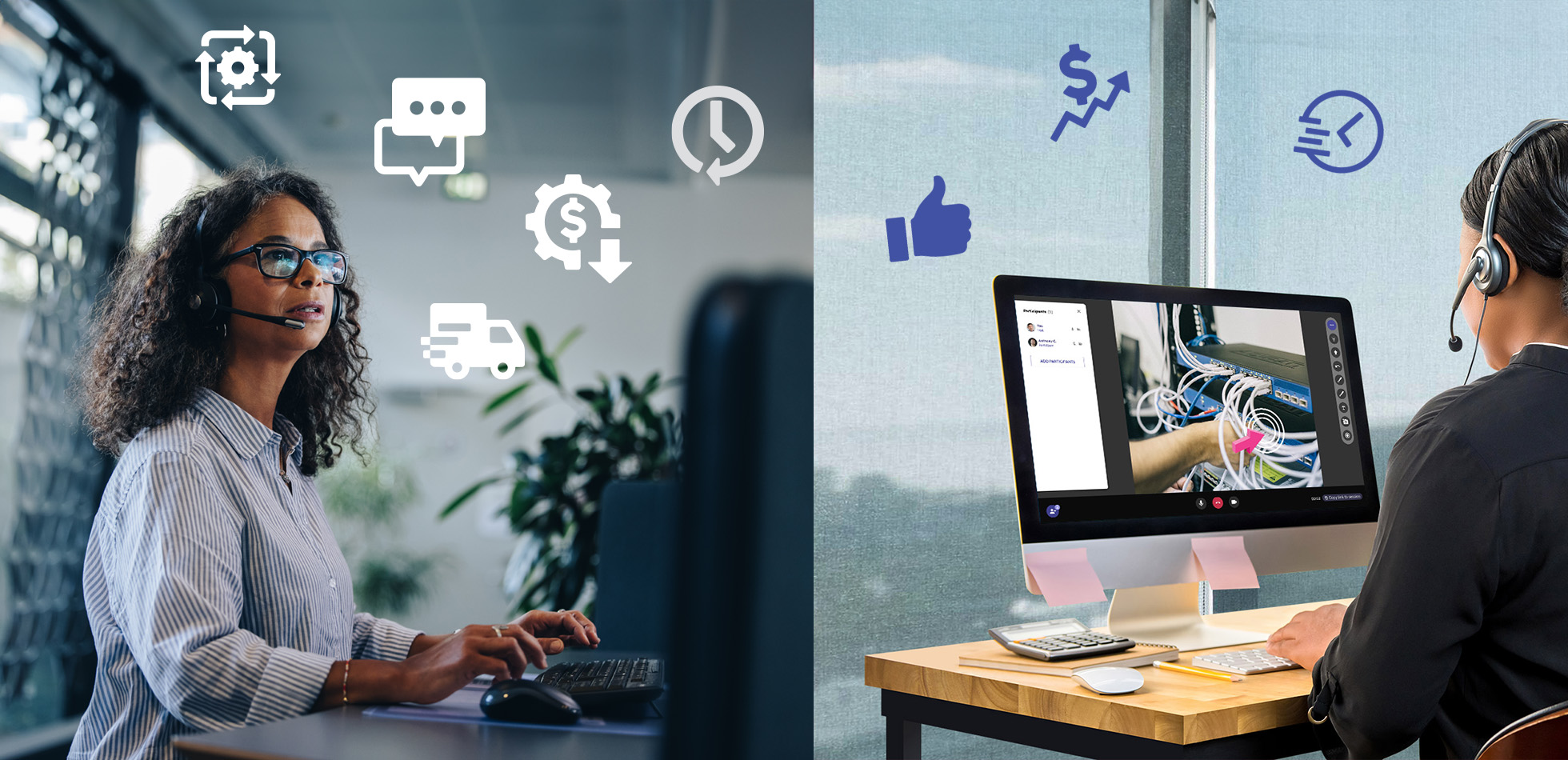Understanding average handle time (AHT) is crucial for businesses looking to optimize their customer service operations. Simply put, customer inquiry resolution time across all communications channels is measured by AHT. These channels include phone calls, emails, chats, or social media interactions.
Why does tracking AHT matter for your business?
Efficiency and satisfaction are closely linked in the fast-paced world of customer service. AHT plays a crucial role in measuring both. Businesses can gain valuable insights into their bottom line and customer relationships by tracking AHT.
AHT affects customer satisfaction. Lengthy interactions and wait times can frustrate customers. AHT data is a valuable source of insights for improving customer service operations. A decrease in AHT suggests that customer concerns are addressed promptly. Companies identify and resolve issues by regularly analyzing AHT across channels, improving training, and optimizing customer service operations.
How is AHT calculated?

- Talk Time: The duration of the actual agent-customer conversation.
- Hold Time: The time a customer spends on hold waiting for an agent.
- After-Call Work Time: The time an agent spends documenting the interaction, updating systems, or performing follow-up tasks.
What is Considered a Good AHT?
Unfortunately, a universally accepted “good” AHT metric cannot be applied to all businesses. Companies have unique requirements and challenges that affect customer interaction handling time.
The time required to solve an issue may depend on the industry and the nature of the problem. For instance, resolving issues through phone calls usually takes longer than chatting or emailing. Basic questions can be resolved more quickly than complex technical troubleshooting that require in-depth analysis and testing.
How do you optimize your team’s AHT?
While aiming for the lowest AHT possible might seem tempting, remember that speed shouldn’t compromise quality service. Striking the right balance is critical. Here are some strategies to improve your AHT without sacrificing customer satisfaction:
Empower Your Agents
Investing in regular training sessions can provide agents with comprehensive knowledge. Clear protocols, standardized scripts, and decision trees can streamline responses. Enabling self-service tools can empower agents to access relevant information and improve efficiency.
Optimize Processes and Technology
To enhance your resolution process and improve customer experience, consider streamlining workflows. Streamlining workflows eliminates unnecessary steps, automates repetitive tasks, and simplifies reporting procedures. By leveraging technology to deflect simple inquiries, customers are connected with qualified agents. Investing in analytics helps identify improvement areas to make data-driven decisions.
Focus on the Customer Experience
Encourage agents to focus when listening to customer concerns. Train agents to avoid repeating questions to the customer. This helps agents grasp the issue and provide precise solutions. Resolving issues during the initial interaction can reduce AHT.
There’s no one-size-fits-all solution. Focus on continuous improvement and be open about your AHT goals with your team. Implementing these strategies can improve customer service and drive business growth.
What are other Important Customer Service Metrics?
AHT is a useful customer service efficiency indicator when it is supplemented with a broader range of metrics. These are other key metrics that provide a comprehensive view of your customer service performance.
First Contact Resolution (FCR):
Calculates the percentage of problems resolved during the first interaction, indicating problem-solving efficiency. Track it alongside AHT to ensure efficiency doesn’t compromise thoroughness.
Net Promoter Score (NPS):
Gauges customer loyalty by asking them whether they will likely recommend your brand. A high NPS indicates satisfied customers, potentially driving organic growth.
Customer Satisfaction Score (CSAT):
Captures direct feedback on specific interactions, revealing areas for improvement and highlighting service strengths.
Self-Service Resolution Rate:
Measures the success of self-service options like FAQs or knowledge bases, reducing agent workload and customer effort.
How Can CareAR® Assist Help

CareAR Assist is an augmented reality (AR) support tool. AR remote support has emerged as a powerful tool for improving average handle time (AHT) in several ways:
Increased First Contact Resolution (FCR):
- Enhanced Visualization: AR support allows technicians to see exactly what the customer sees through their smartphone or tablet camera. This eliminates the need for lengthy descriptions, leading to faster and more accurate diagnoses.
- Remote Guidance: Technicians can superimpose annotations, 3D models, and step-by-step instructions directly onto the customer’s environment. This visual guidance empowers customers to perform simple troubleshooting tasks themselves. It is possible to solve the problem without needing a physical site visit.
Reduced Need for Escalation:
- Expert Access: AR support facilitates real-time collaboration between on-site technicians and remote experts. Experts can virtually “see through the eyes” of on-site personnel. Experts provide real-time specialized guidance, reducing the need for escalation to senior technicians.
- Knowledge Sharing: AR support sessions can be recorded and shared with other technicians to create a valuable knowledge base for future reference. This empowers future technicians to resolve similar problems faster.
Improved Efficiency and Workflow:
- Reduced Travel Time: Remote AR support reduces the need for on-site visits, which optimizes resource allocation. This frees up technicians for more complex problems and preventive maintenance.
- Faster Data Collection: Technicians can capture photos, videos, and notes with annotations directly through the AR support interface, streamlining data collection and reporting processes. This reduces administrative time and allows for quicker issue resolution.
Equip your team with the AR support resources and support they need to succeed.
Why Choose CareAR Assist for AR Support?
- Increased Customer Satisfaction: Faster resolution times, reduced waiting periods, and clear visual communication lead to a more positive customer experience
- Cost Savings: Reduced travel expenses, fewer escalations, and improved first-time fix rates contribute to significant business cost savings.
- Scalability and Flexibility: AR solutions can be easily deployed across different service areas and technical skill levels, offering a scalable and adaptable approach to remote support.
It’s important to remember that any AR support tool should be seen as complementary, not a replacement for traditional support methods. However, CareAR Assist enables your organization to collaborate, visually guide, and streamline workflows for faster resolutions. It’s a valuable asset in improving AHT and satisfying customer experiences.
Are you interested in learning more about CareAR? Contact Us to speak with an expert.
